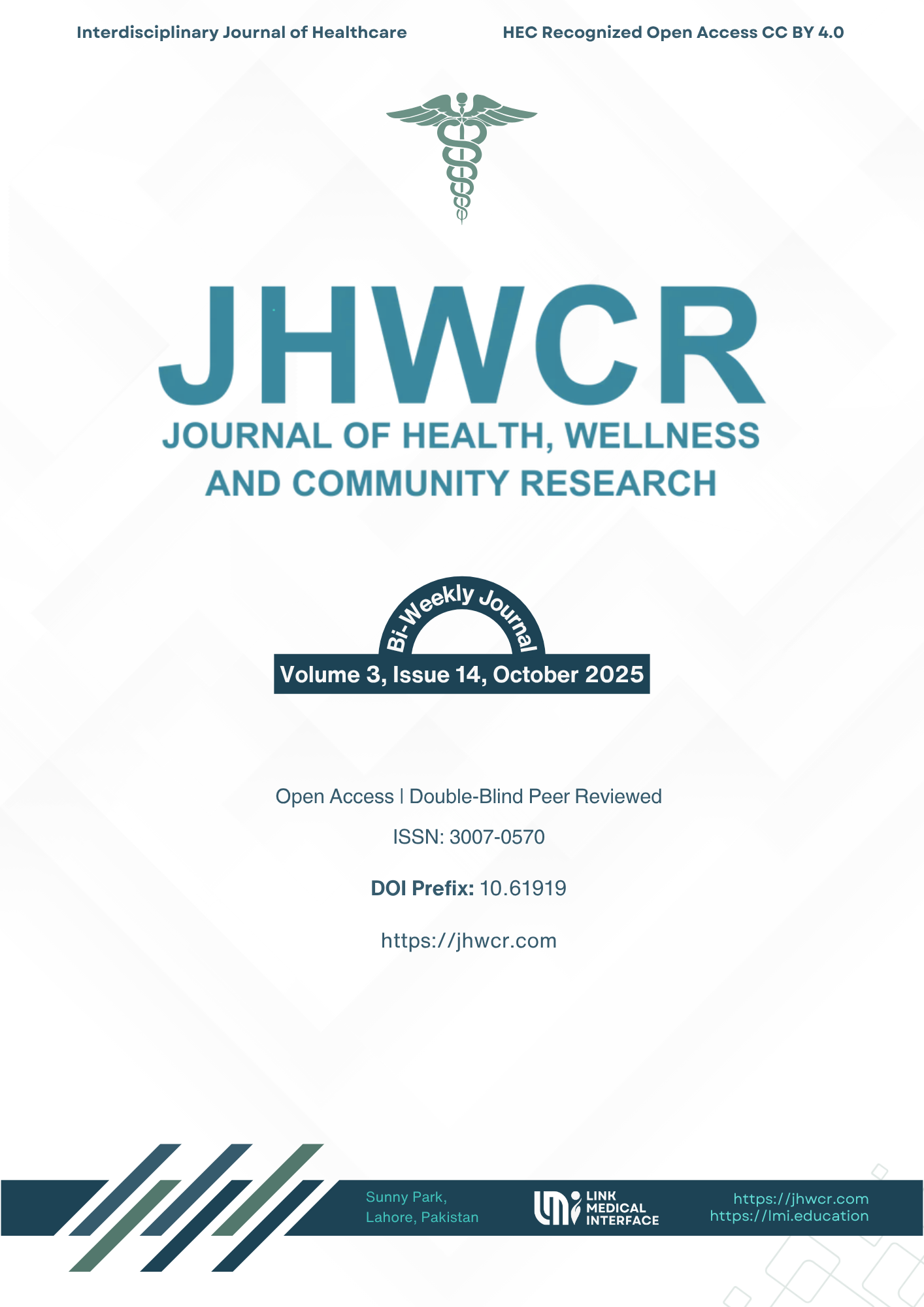Effects of Acupressure on Pain, Disability and Range of Motion in Patients with Neck Pain
DOI:
https://doi.org/10.61919/z4r7w402Keywords:
neck pain; acupressure; TENS; exercise therapy; Neck Disability Index; range of motion.Abstract
Background: Chronic non-specific neck pain is common and disabling. While exercise-based physiotherapy is guideline-endorsed, effect sizes vary and pharmacologic options pose risks, prompting interest in low-risk complementary therapies such as acupressure (8–11). Objective: To compare acupressure plus exercise and heat versus traditional physiotherapy (TENS, heat, exercise) on pain, disability, and cervical range of motion (ROM) in chronic neck pain. Methods: In a randomized controlled study, 40 adults (18–60 years; pain ≥6 months) were allocated to acupressure with hot pack and exercises (n=20) or traditional physiotherapy with hot pack, TENS, and identical exercises (n=20) over 18 sessions/6 weeks. Outcomes measured at baseline and post-intervention were Numeric Pain Rating Scale (NPRS), Neck Disability Index (NDI), and goniometric ROM. Paired and independent t-tests assessed within- and between-group changes (α=.05). Results: Both groups improved significantly. NPRS decreased by −1.80 with traditional physiotherapy (p=0.003) and −3.35 with acupressure (p=0.000), difference −1.55 favoring acupressure (p=0.001). NDI improved by −7.25 vs −11.20 (p=0.005 and p=0.002; between-group difference −3.95, p=0.004). ROM gains were greater with acupressure for flexion (+14.0° vs +7.5°, p=0.008) and extension (+31.4° vs +20.5°, p=0.022), with comparable rotation/bending gains. Conclusion: Acupressure integrated with exercises and heat produced superior reductions in pain and disability and larger mobility gains than a traditional physiotherapy package.
Downloads
Published
Issue
Section
License
Copyright (c) 2025 Muhammad Atif Khan, Hira Islam, Muhammad Asif, Malika, Nigar Begum, Maryam Liaquat (Author)

This work is licensed under a Creative Commons Attribution 4.0 International License.


